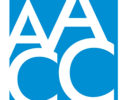Recruiting for manufacturing through maker faires
By Madeline Patton
August 10, 2016
Maker faires allow colleges to spotlight STEM careers as well as showcase products made by students.
Karen Wosczyna-Birch is still feeling the “Wow!” effect of the first Greater Hartford Mini Maker Faire in Connecticut.
“The excitement that you feel at these maker faires is contagious,” Wosczyna-Birch said. “It really captures the attention of little kids up to senior citizens.”
The Regional Center for Next Generation Manufacturing (RCNGM) that she leads organized the free, one-day event at Tunxis Community College last October to recruit students and raise community awareness about advanced manufacturing.
For Wosczyna-Birch, the success of that event led to her participation in a gathering for the Nation of Makers initiative in June at the White House. She is now the Connecticut lead for the National Maker Network.
Wosczyna-Birch spoke recently at the High Impact Technology Exchange Conference (HI-TEC) in Pittsburgh. It’s organized by 31 Advanced Technological Education (ATE) centers and projects, including the American Association of Community Colleges (AACC). The conference informs secondary and postsecondary educators, guidance counselors and employers about the outreach activities, curriculum and other resources developed by the model technician and STEM education programs funded with National Science Foundation’s (NSF) ATE grants.
Prototyping products
The 1,500 people who attended the Greater Hartford Mini Maker Faire, which is affiliated with the worldwide Maker Faire organization, saw the creative output of 48 makers. The event was a showcase for ingenuity.
Makers included community members and students from Connecticut colleges’ STEM programs and the Mechanical Engineering Technologies & Manufacturing (MET2) program. MET2 blends technical, professional and entrepreneurial skills instruction with real industry prototyping and other hands-on tasks for interdisciplinary teams for college and university students. The NSF ATE program provides grants to the education-industry consortium to offer MET2 as well as RCNGM, which is one of 42 ATE centers.
An additive manufacturing program’s 3-D models of attendees’ faces is one example of the interactive activities the colleges used to show off advanced technologies and their students’ skills, as well as a way to start conversations about technical careers.
Corporate sponsors also found fun ways to display what they make. Legos, for instance, used its plastic blocks to create a giant map of Connecticut in a courtyard. Participants were encouraged to use other Legos to make representations of landmarks.
Do your own
Wosczyna-Birch offered tips for organizing a maker faire. She recommends working with the Maker Faire organization — which charges a licensing fee — because it provides a tailored website, registration and data collection services. Other suggestions:
- Find an appropriate venue.
- Obtain insurance to cover the event.
- Set up a data base of potential makers
- Solicit makers and sponsors
- Develop publicity and logistics plans. Use a giveaway, such as a drone, as an incentive for makers and attendees to sign in upon arrival.



